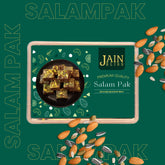JBMT04 - Kulpakji Jain Temple – The Ancient Pilgrimage of South India

Kulpakji Jain Temple – The Ancient Pilgrimage of South India
Kulpakji, also known as the Kolanupaka Jain Temple, is one of the most revered Jain pilgrimage centers in South India. Located in Kolanupaka village, Yadadri Bhuvanagiri district, Telangana, this temple is believed to be more than 2,000 years old and continues to attract thousands of devotees every year.
Location
-
Village: Kolanupaka
-
District: Yadadri Bhuvanagiri, Telangana
-
Distance: Around 80–86 km from Hyderabad on the Hyderabad–Warangal Highway.
- Nearest Railway Station: Aler, from where the temple can be reached via an auto-rickshaw.
Significance
Kulpakji is considered a major Jain pilgrimage site and is among the oldest Jain temples in India. It houses idols of several revered Tirthankaras, including:
-
Lord Rishabhanatha (Adinath Bhagwan) – the first Tirthankara, worshipped here in the form of the famous Manikyaswami idol.
-
Lord Neminatha – the 22nd Tirthankara.
-
Lord Mahavira – the 24th Tirthankara, whose serene green jade idol is especially unique.
Architectural Beauty & Deities
-
The temple’s interior is crafted from red sandstone and white marble, creating a rich and spiritual ambiance.
-
The idol of Lord Rishabhanatha (Manikyaswami), carved from a single piece of green stone, is the temple’s spiritual centerpiece.
-
The idol of Lord Mahavira, made entirely of green jade, is 130 cm tall and admired for its calm, smiling expression that radiates peace.
-
On either side of the sanctum, there are eight deities of other Tirthankaras, adding to the temple’s grandeur.
- The temple complex also houses idols of Shantinatha, Chandraprabha, Abhinandananatha, Padmavati, Bhomyaji, Simandar Swami, and Mata Padmavati.
History & Renovation
-
The temple has been an active pilgrimage site for over 2,000 years.
-
It underwent major renovation in the 1960s by the Manikchand Group, who preserved the ancient garbhagriha (inner sanctum) while constructing a new temple around it.
- According to belief, the idol of Lord Rishabhanatha was once possessed by King Ravana, who obtained it through penance and gifted it to his queen Mandodari. After the fall of Lanka, the idol was safeguarded by the Guardian Deity of the Jain order under the sea, until it was later installed in Kolanupaka.
Visiting Information
-
Transport: Easily accessible from Hyderabad and Warangal by road, and from Aler railway station.
-
Accommodation: The Kulpakji Dharamshala offers both free food and stay options, including standard and deluxe rooms.
- Festival: The annual festival is celebrated between the 13th and 15th day of the bright half of Chaitra month, drawing thousands of devotees.
History & Renovation
The temple has been an active pilgrimage site for over two millennia.
In the 1960s, it underwent major renovations by the Manikchand Group, who carefully preserved the ancient garbhagriha (inner sanctum) while constructing a new temple structure around it.
According to Jain tradition, the idol of Lord Rishabhanatha was once obtained by King Ravana through penance and gifted to his queen Mandodari. After the fall of Lanka, the Guardian Deity of the Jain order protected it under the sea until it was finally installed in Kolanupaka.
Devotees believe that the original deity of Lord Adinath, known locally as Manikya Deva, made Kolanupaka its eternal abode.
Spiritual Importance
Kulpakji is not just a temple, but a living symbol of Jain tradition in South India. Devotees believe that Lord Rishabhanatha himself chose Kolanupaka as his abode in the form of Manikya Deva. The temple’s spiritual aura, combined with its sacred idols and vibrant annual celebrations, makes it a must-visit pilgrimage for every follower of Jain Dharma.
Hidden Fact
🔎 Hidden Fact: The green jade idol of Lord Mahavira at Kulpakji is one of the very few such idols in the entire world. It is said that anyone who gazes upon the smiling face of the idol with devotion experiences instant calmness and inner peace, a divine blessing that makes this temple truly unique among Jain Tirthas.

































